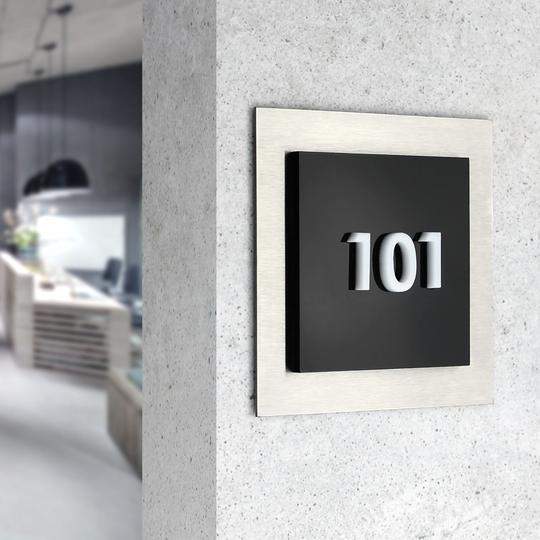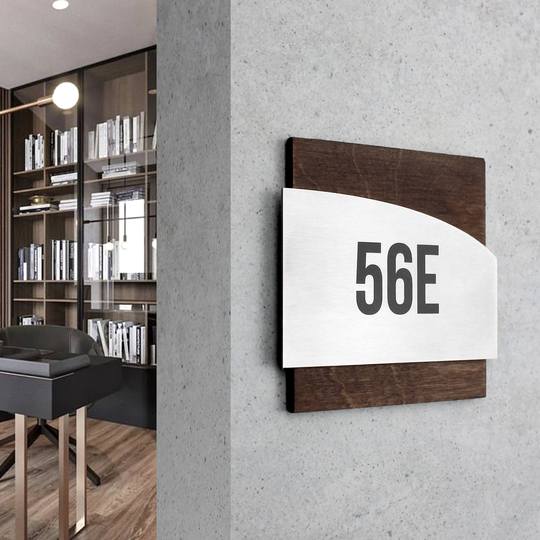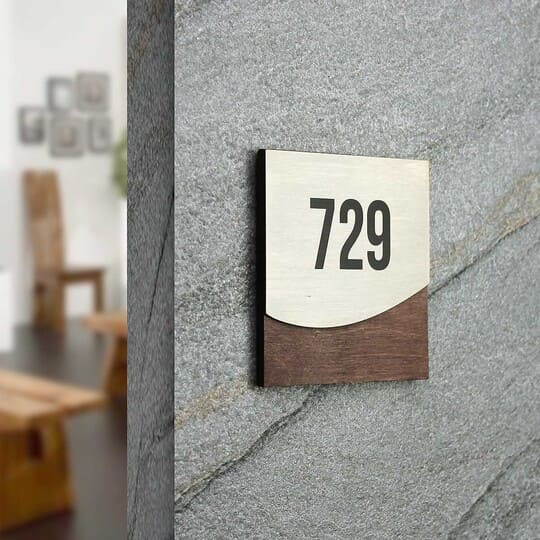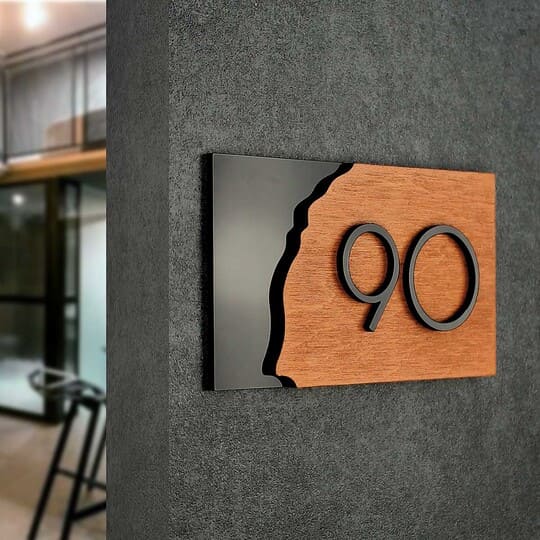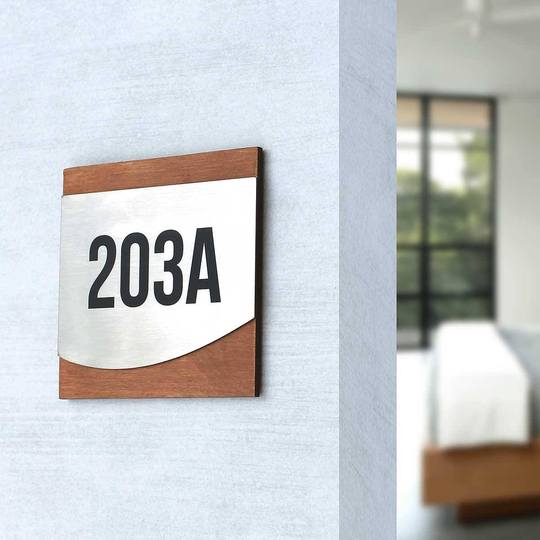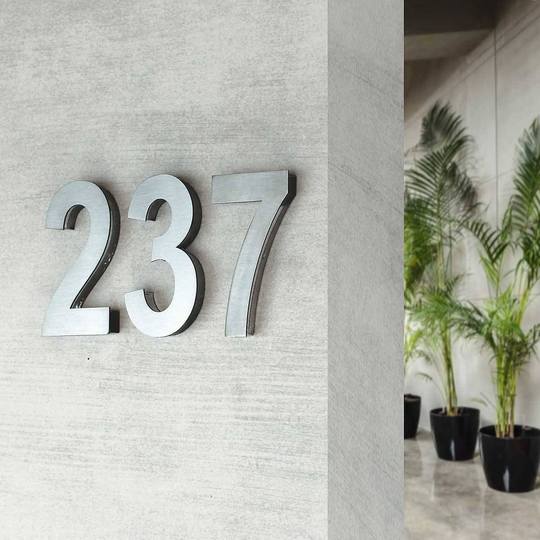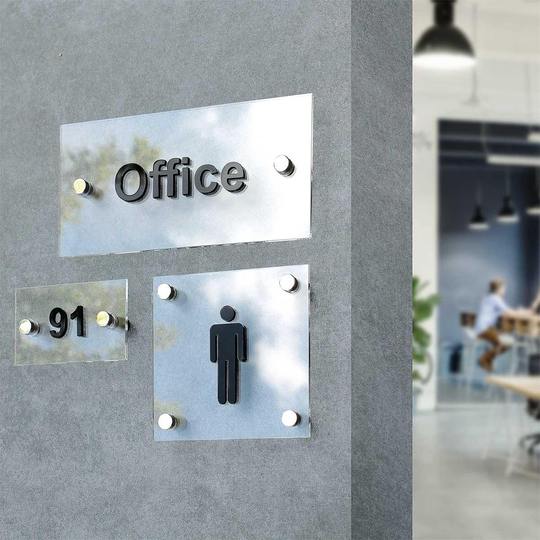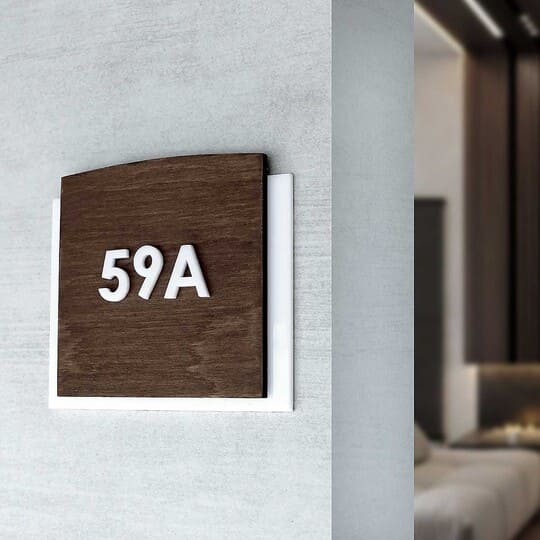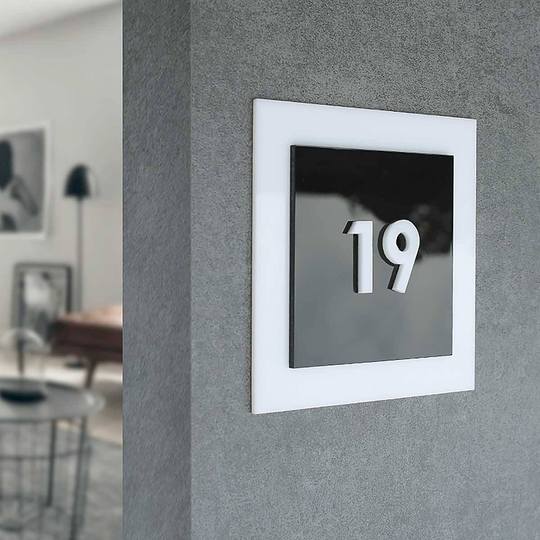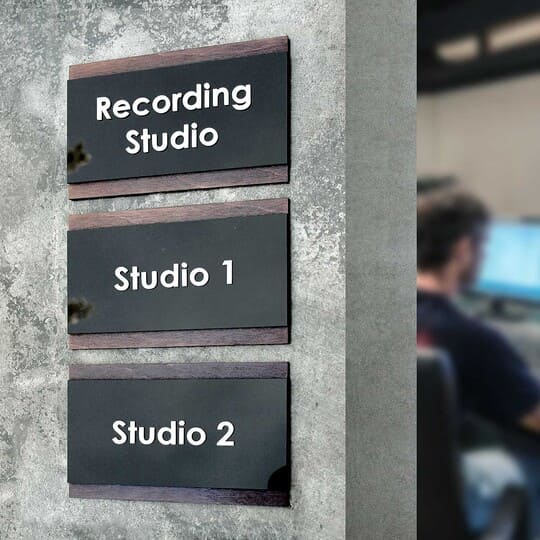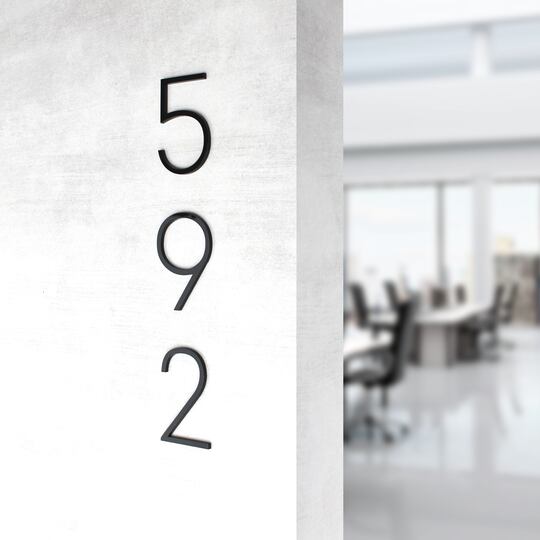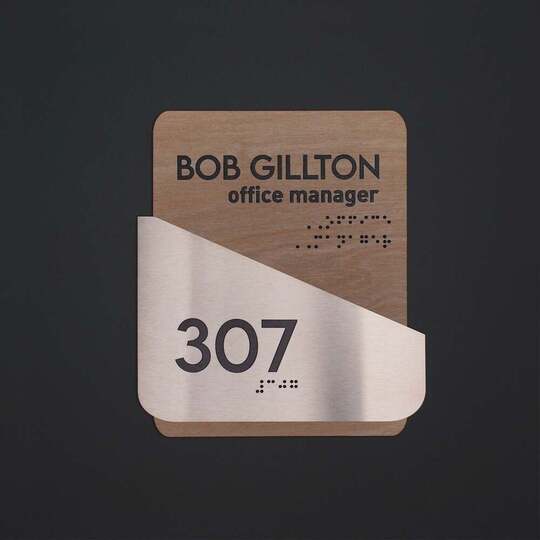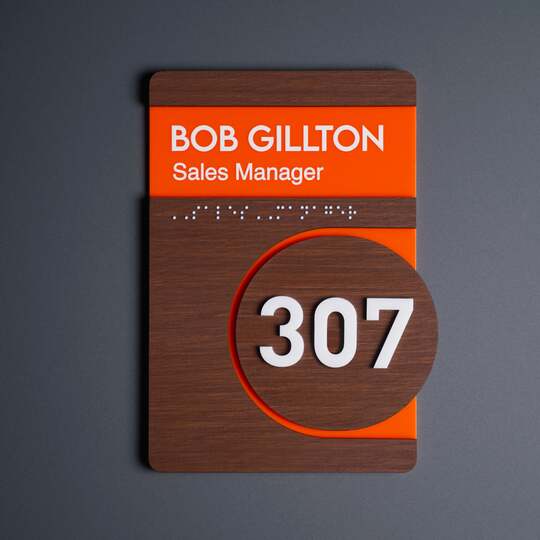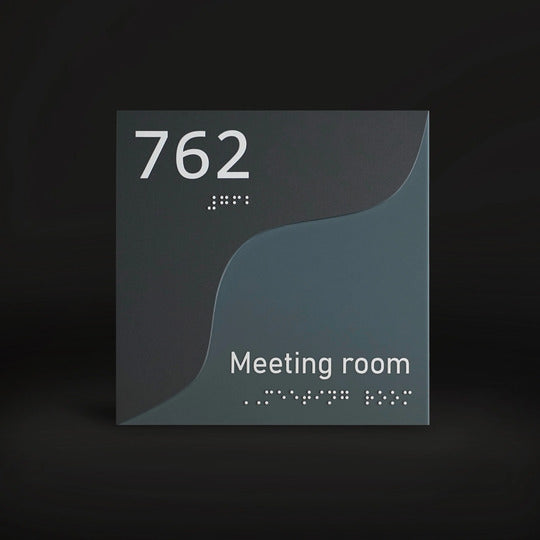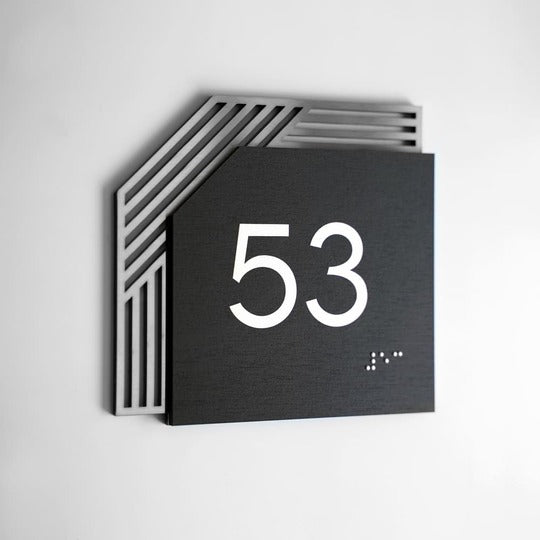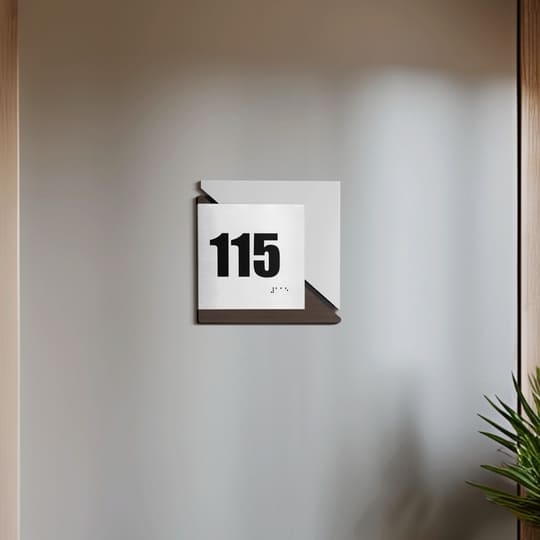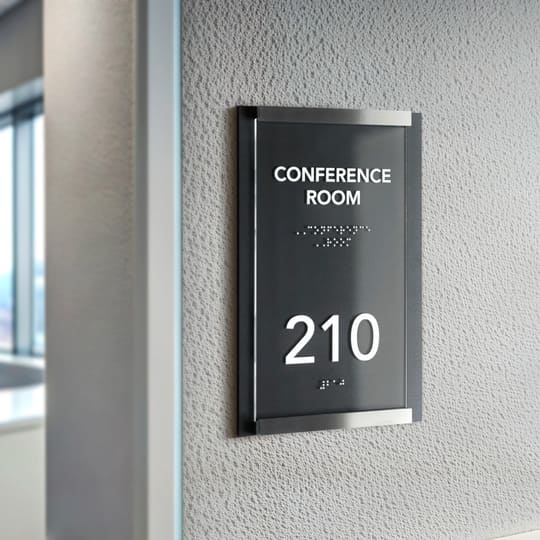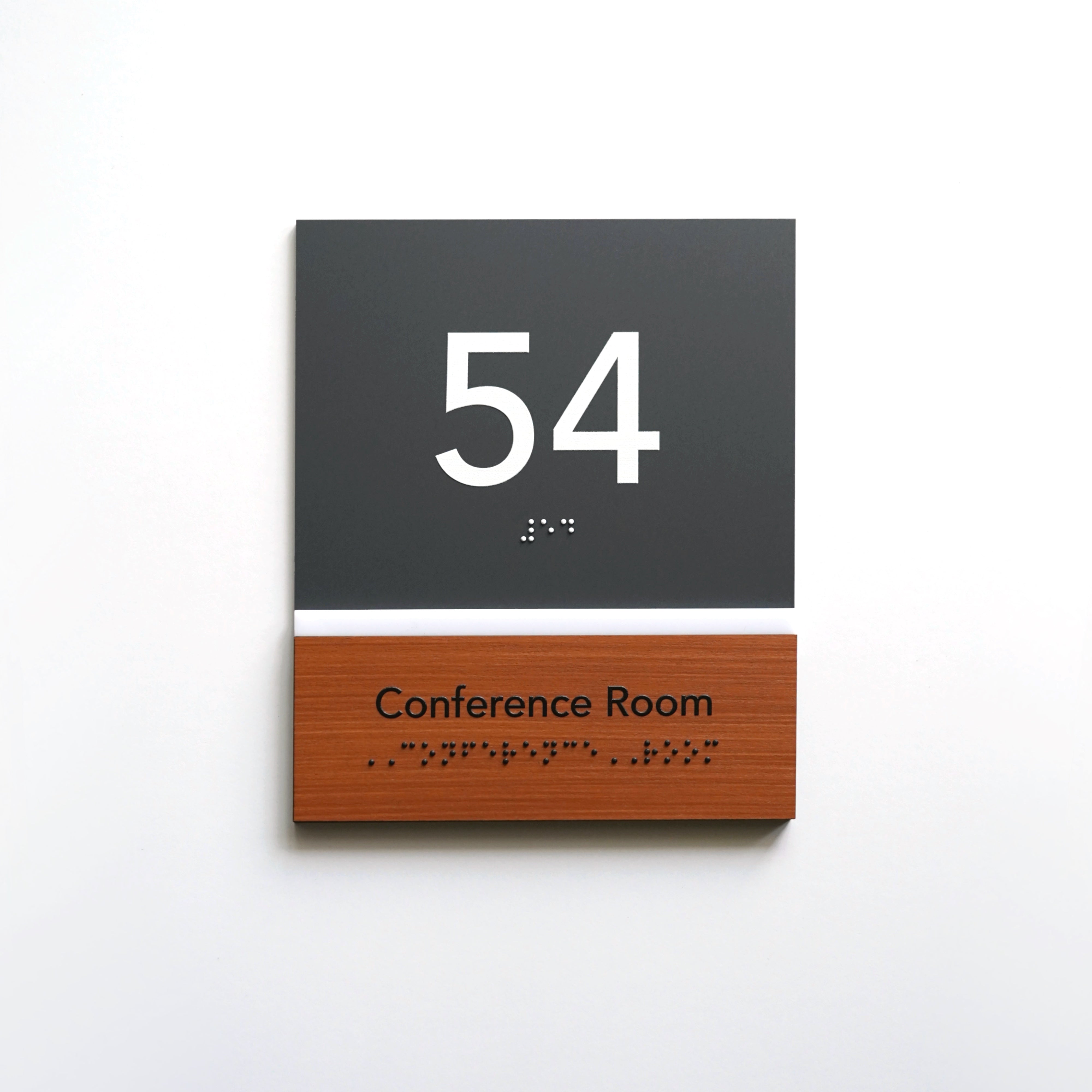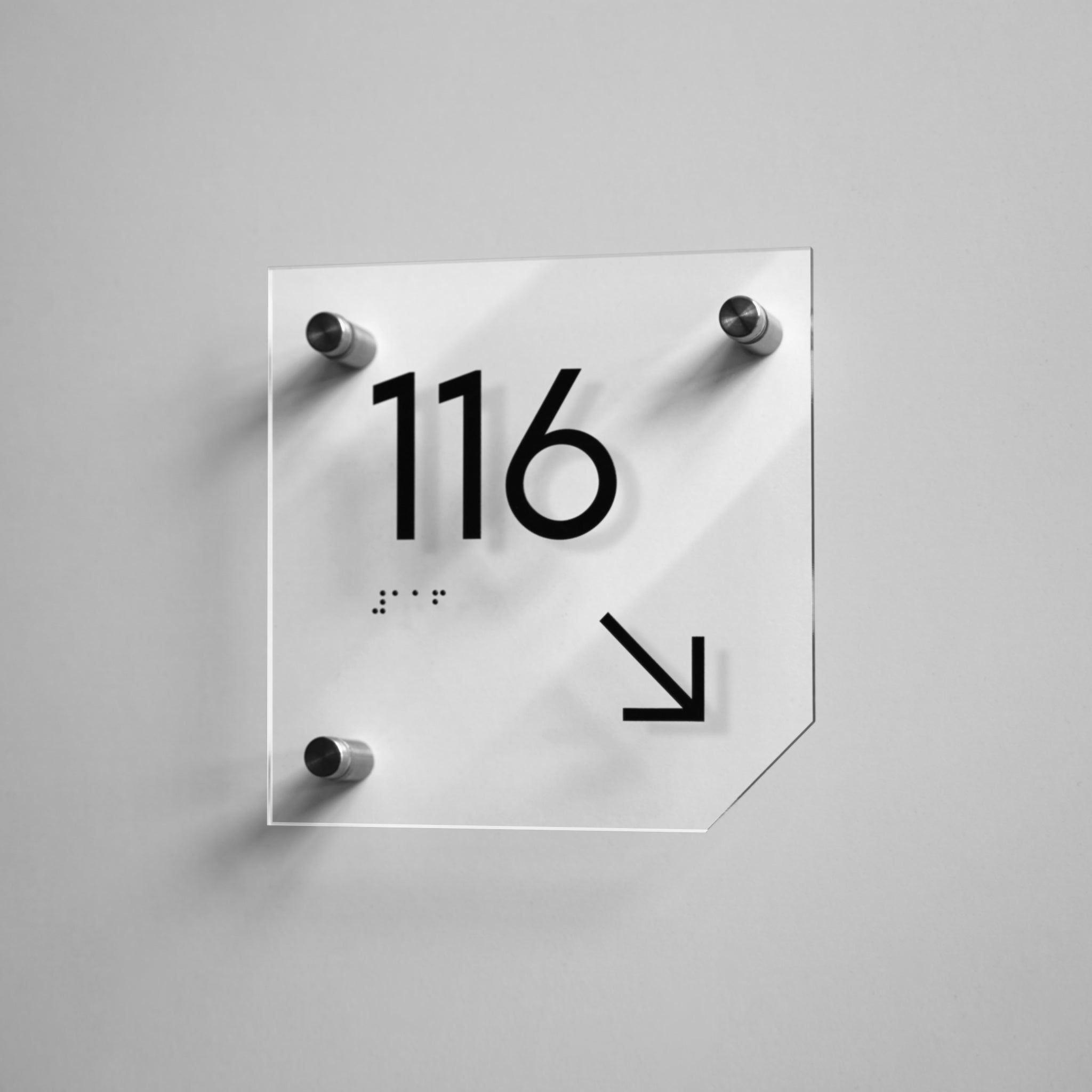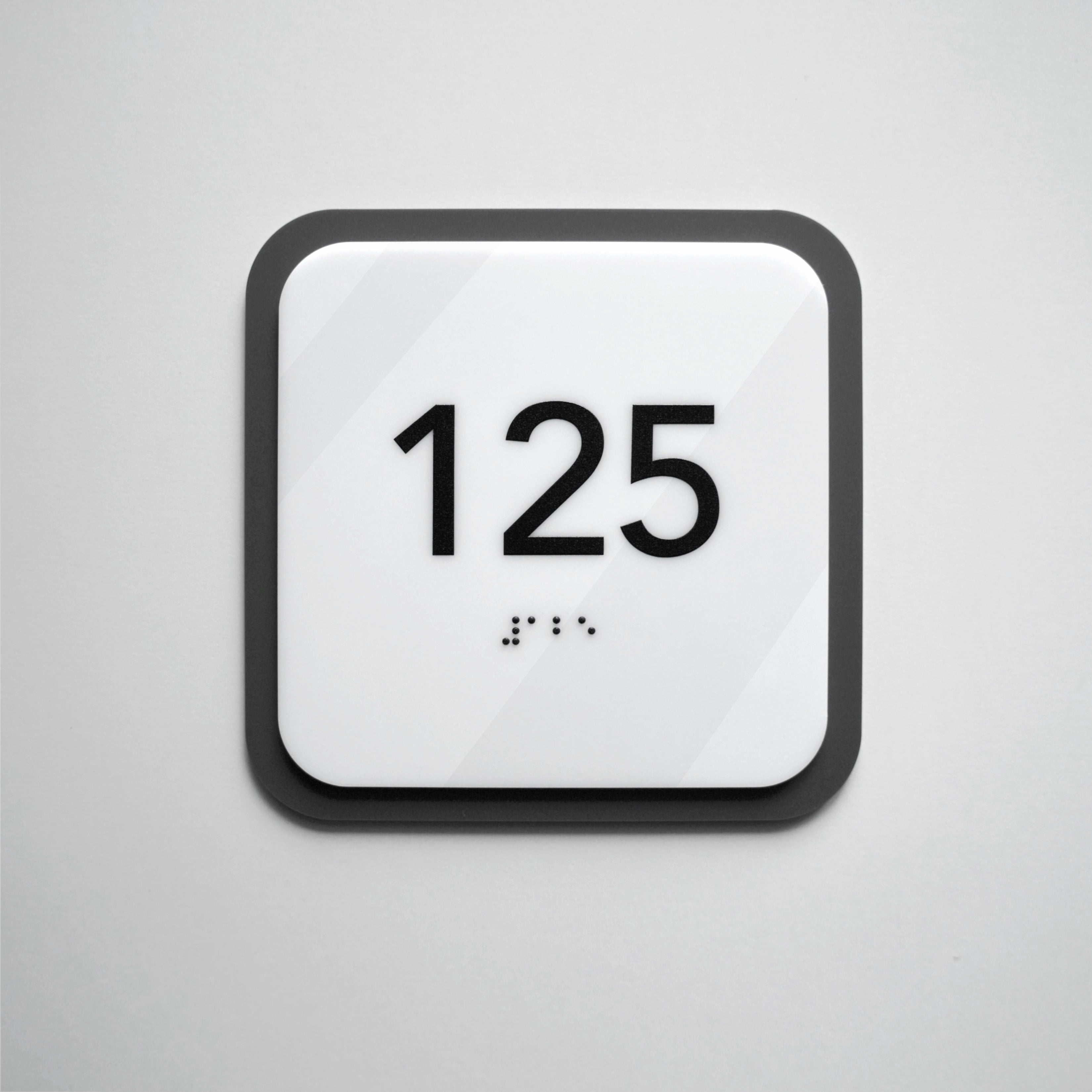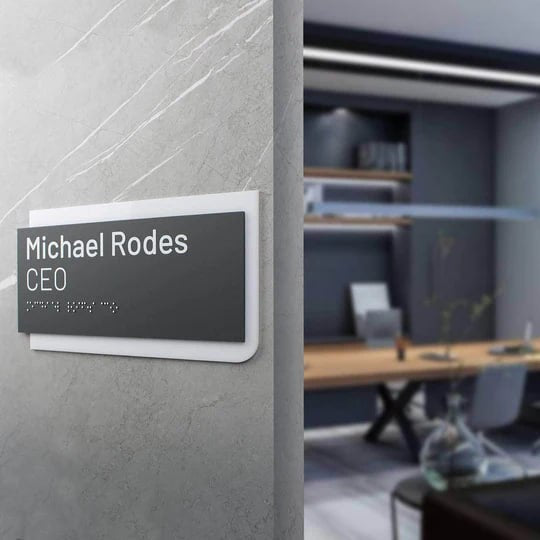
A revolution in navigation: how the combination of modern signage materials changes the approach to signs
What does a luxury hotel, a modern office and a stylish showroom have in common? Attention to detail. After all, style is not only about furniture or lighting, but also about all the little things that form an impression. Commercial signs are one of these elements that play a crucial role in creating visual communications and brand image.
Ten years ago, office door signs, commercial building signage were surely functional: standard plastic or metal signs, without design and character. But over time, the signage industry has changed. Businesses that want to leave a lasting impression understand that even a business sign can work to increase brand visibility, complement the space, create the right atmosphere and attract potential customers. How exactly does it work? Let's find out together.
Signage materials: a combination that defines the style
A real breakthrough in this area occurred when designers began to combine different materials: wood signage, acrylic, stainless steel and other materials. Trendy materials in interior design are a new level of aesthetics that adds depth, structure and a sense of premium to signs.
What materials are used to create stylish signs?
-
Wooden signs are all about warmth, naturalness and tactile pleasure. They add a sense of cosiness and an elegant look to the space.
-
Acrylic signs are a symbol of modernity. Thanks to transparency or contrasting inserts, they add depth and dynamics.
-
Stainless steel signs are the choice for those who value durability, quality, clean lines and status.
Each of these materials is effective on its own, but their combination opens up even more possibilities. The combination of materials in signage is a true art form.
Wood and steel create a harmonious balance between natural warmth and technological strength. Acrylic in combination with wood adds lightness and texture, creating a sophisticated accent. And the use of all three materials together offers significant advantages for design.
High-quality signage made of these materials become an accent that emphasises the uniqueness of the space.

Design of custom signs for business
Hotel signage: aesthetics and comfort
A hotel is not just a place to stay, but a real experience that guests remember for a long time. From the moment they check in to the room, every detail affects their experience. That's why signage design should be in harmony with the overall style of the establishment, and quality navigation should help visitors easily get around the space.
Well-designed rooms, convenient signage to lifts, restaurants or recreation areas — all this creates a comfortable environment, increasing the level of service. Brand image largely depends on the design of the space: stylish, modern and unique signs can emphasise the exclusivity of the establishment and leave an impression of a high level of service.
For example, customised signs with a combination of wood and steel add a touch of finality to a space, creating an atmosphere of exclusivity and completeness. Every element of the interior matters, and the right materials for plaques can create a flawless space that meets the expectations of the most demanding guests.

Office signage: part of the identity
A modern office is more than just a workspace. It is a place of inspiration, communication and idea creation. A company's image starts with the details.
Companies that care about their brand use exclusive, branded signs as part of their corporate identity. These are not just signs, but elements of visual communication that form a holistic image of the company. Potential customers, partners and visitors always pay attention to the brand message in detail.
Durable materials for navigation help to create a harmonious space that helps to emphasise the company's status. And minimalist navigation signs with 3D effects or wood and metal accents harmoniously fit into the brand's visual communications.

Business signs: a marketing component
Imagine a luxury clothing boutique where every detail is thought out to the smallest detail: perfect lighting, exquisite furniture, an atmosphere of comfort and exclusivity. Can there be an ordinary plastic sign in such a space? No, it can't. After all, even the smallest details play an important role in brand perception.
That's why luxury signage made of natural wood becomes not just an informational element, but a logical continuation of the brand aesthetics. They logically complement the aesthetics of the brand, forming a holistic image and emphasising its status.
In addition, brand visibility and identity play a crucial role in creating a lasting impression. The clients do not just remember the interior — they associate the space with the quality, style and reliability of the company. A well-chosen sign not only performs a navigational function, but also reinforces the brand's marketing strategy by creating an emotional connection with the visitor.

Signage solutions: signage trends in 2025
Signs with QR codes: a new level of interaction
QR codes on signs provide access to menus, company websites, video instructions or additional information. This is a convenient way to interact with visitors without unnecessary questions and printed materials, as well as increase interactivity and create new design possibilities. This trend is actively used in hotels, restaurants, offices and business centres, adding a modern look to the space.
Ecodesign: minimising waste and using natural materials
In 2025, businesses are focusing even more on sustainability. Signs made of natural wood combined with stainless steel are not only durable, but also in line with the concept of sustainability. By avoiding plastic in favour of more environmentally friendly solutions, the space is stylish and conscious at the same time, thanks to the reduction of waste.
Сustomised navigation signs: brand identity to the max
Brands are increasingly using customised signs for brand identity that reflect the style of the business. Custom solutions allow you to create signs that perfectly integrate into the overall interior and enhance the company's image.
Combination of textures: depth and style
Modern signage design actively uses a combination of materials. The combination of smooth and textured surfaces makes signs for commercial premises visually appealing and aesthetically pleasing.
Creative design and complex intricate patterns
Technology allows us to create unique design solutions: embossed patterns, three-dimensional letters, combined materials and integrated lighting elements. Thanks to this, signs become not just navigation signs, but a part of the decor and a recognisable element of space.
Engraving and smart technologies open up new horizons in the creation of unique signs, turning them into real design accents. Together, these elements form sophisticated, technologically advanced designs that make spaces stand out and create a special atmosphere for visitors and customers.

How to choose the right signature solutions for your business?
-
Determine the style of your space
Before ordering signs, you should think carefully about their role in the overall design of the room. The choice of right materials and design should harmoniously fit into the space, complementing it rather than contradicting it.
For modern interiors that tend to be minimalist, acrylic plaques with a glossy surface or stainless steel are the perfect choice. Such solutions look restrained but sophisticated at the same time. The smooth surface, clear lines and laconic font emphasise the modern style and add elegance to the room.
If the space is decorated in a classic or vintage style, it is appropriate to use wooden signs. They give a sense of naturalness, cosiness and noble simplicity. Plaques made of textured wood look especially impressive, emphasising its natural beauty. They perfectly complement the professional aesthetic of restaurants, boutique hotels, galleries or private residences where it is important to convey an atmosphere of tradition and sophisticated taste.
In a loft or industrial style space, stainless steel with wood will be the most advantageous option of the final product. Metal elements give the room a sense of strength and technology, while wooden types of signs create balance and add warmth. This combination is perfect and beneficial for modern coffee shops, coworking spaces, bars or creative offices where originality and individuality are valued.
On the material selection, hotels, premium establishments and executive offices can successfully combine several materials at once — wood, metal and acrylic. This allows you to create a unique style that combines the depth of textures, the nobility of metal and modern technological solutions. Thanks to this approach, the signs look exclusive and become a real accent in every space.
It is important to remember that signs are not just information carriers or directional indicators. They affect the perception of space, so before choosing, you should analyse the overall style of the room and find a solution that will not only complement it, but make it even more harmonious and expressive.

-
Choose the right materials
To ensure that your signs retain their aesthetic appearance and functionality for a long time, you should choose resistant materials that can withstand active use. This is especially important for high-traffic areas, where surfaces are subjected to frequent touch and mechanical impact. High-quality materials ensure excellent durability, allowing signs to remain attractive even in the most intense environments.
-
Add functional elements
Thanks to technology, modern signage can perform not only a navigational function, but also engage customers by making the space more interactive. For example, signs with QR codes open up new possibilities: one scan is enough to go to the company's website, view the menu or get detailed information about services.
Additional depth and a premium effect are created by 3D letters, which add volume and visual expressiveness to the signs. It's not just a sign — it's a maximally useful design element that emphasises the status of the space. Tactile elements, such as Braille, make the space accessible and convenient for everyone, ensuring inclusivity.
Personalised logos and unique design solutions help to create a recognisable style that emphasises brand identity. Signs that engage customers in interaction work not only as an information medium, but also as an effective marketing tool that creates the right impression of the establishment at first glance.
-
Think about the proper installation
To ensure that the sign looks harmonious and lasts for many years, it is important to take care of the correct wall mounting. The mounting method should match not only the material of the sign, but also the surface on which it will be installed. Smooth walls, glass or metal surfaces are well suited for mounting on double-sided tape — a quick and effective solution that provides a firm hold without any holes.
For a more sophisticated and stylish effect, metal spacers can be used. They not only securely fix the sign, but also create a feeling of lightness and volume, as if it were floating above the wall. This is especially true for stainless steel or wooden signs, where the aesthetic effect is important.

-
Consider the production process
Not all signs are of equal quality, and the choice of manufacturer is important. Sign companies that care about quality use modern technologies, such as permanent UV printing, to ensure the longevity of the image.
They work exclusively with high-quality materials, not replacing acrylic with plastic or stainless steel with cheaper aluminium. Such manufacturers also offer customised solutions, taking into account the specifics of each project, rather than limiting themselves to mass production. This approach ensures that the signs are not only aesthetically pleasing but also retain their quality for many years to come.
-
Consider the weather conditions
Outdoor signs must be able to withstand rain, snow, sun and wind without losing quality. It is important to choose sustainable materials that do not fade, rust or warp due to temperature changes. Stainless steel, acrylic, and wood are great options that retain their sleek appearance for a long time. It is also worth paying attention to a reliable mounting method to ensure that the sign stays in place even in difficult weather conditions.
Conclusion
The revolution in the world of navigation and information design has demonstrated that modern signs can be not only functional, but also aesthetically significant elements of space. They set the style, form the impression, help businesses emphasise their uniqueness, and have a positive impact on business operations, creating a significant difference in the eyes of customers and capturing their attention.
Current trends show that signs are becoming an important part of branding, helping businesses stand out and leave a lasting impression. From hotels and offices to boutiques and restaurants, the proper materials and intricate design of signs create visual accents that shape the company's image.
The future of signs is customisation, integration of technology (QR codes), environmental friendliness and a harmonious combination of textures. Businesses should not just follow the trends, but take a conscious approach to the choice of navigation solutions so that they become part of the overall style and concept of the brand.
If you are also looking to create a unique space, don't hesitate to contact us — we will help you find the ideal signature solutions for your business!
